In Memoriam: comics professionals we lost in 2012
One of the most popular features of the various annual awards shows such as the Oscars, SAG awards etc., is the ‘In Memoriam’ list. Every year, the names and faces of the people in the industries we lost is almost always controversial because of the names left out and always shocking when you see a name you did not expect to see.
In the comics industry there is no such television broadcast and it is only as people pass that trade papers or websites report on such a loss. So for 2012 I have assembled a list for those people in the industry that were lost to us. Just like the awards shows, I was surprised as I compiling this list. There were people not directly or commonly associated with the comic book industry who nevertheless were known by many fans because of their long association with either certain characters or the industry as a whole. For example Phyllis Thaxter, who played Martha Kent in the first Christopher Reeve Superman film, died at the age of 92. Also, Ray Bradbury whose science fiction works were adapted for comics and who served as an inspiration to many comic book writers died at the age of 91.
Al Rio
Brazilian comic artist and animator Al Rio died of an apparent suicide in January 2012 at the age of 49. He was well known among fans of the Wildstorm titles, GEN-13 and DV8, and for his ‘good girl’ art. His ‘good girl’ style was more iconic and cartoon/animation oriented than the more realistic GG artists like Dave Stevens or Adam Hughes, which served him well with the Wildstorm titles. His work in animation at Disney on the Aladdin animated series is well remembered and his body of comic work is quite large for so young an artist. He worked for virtually all the major publishers at one point or another throughout his career and his work can be seen in issues of DC Comics’/ Vertigo titles and many Marvel books such as X-Men and Captain America.
John Celardo
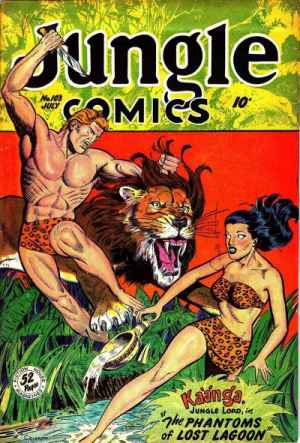 John Celardo was an artist during the height of the Golden Age in comic books and strips. He drew the Tarzan daily and Sunday strips for well over a decade completing over 5000 strips for the classic jungle hero. John died in January 2012 at the age of 93.
John Celardo was an artist during the height of the Golden Age in comic books and strips. He drew the Tarzan daily and Sunday strips for well over a decade completing over 5000 strips for the classic jungle hero. John died in January 2012 at the age of 93.
John was particularly known with fans in the 50’s and with art collectors now as the cover artist on books like Planet Comics, Jungle Comics and Fight Comics as well as his interiors dozens of other books. John was known for his ‘good girl’ covers but his special talent was drawing animals in dynamic action poses. He loved drawing the most outrageous and exciting animals he could and the books with his animal art on the covers are very sought after today by art collectors. In a comics career spanning most of the industries’ history, John Celardo was one of the many artists of the Golden Age to go largely unrecognized in his time and greatly appreciated by a new generation of comic art fans.
Jean Giraud
Jean Henri Gaston Giraud, better known as Moebius, died in March at age 73 after a long battle with cancer. Moebius was famous throughout the world though his effect on the American comics industry was somewhat limited. It is ironic that in most countries other than the US, where the comic book was born, comics are considered high art. Moebius was considered one of France’s national treasures and had even been honored with his face on postage stamps. The influence of Moebius’ art can easily be seen in films such as The Fifth Element, Alien, The Abyss and even Star Wars, but in the US his comic book work is harder to find.
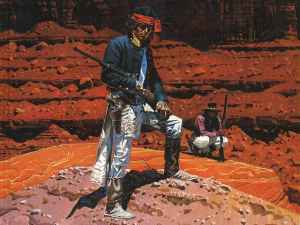 The multiple Harvey and Eisner award winner Moebius was also given a World Fantasy award for numerous books like Arzach, The Airtight Garage and a Silver Surfer story (later collected as a graphic novel) with Stan Lee. Moebius was inducted into the Will Eisner Award Hall of Fame in 1998. While Giraud is mostly known in the US for the magazine Heavy Metal (started in France as Metal Hurlant), his impact on modern fantasy and Western comics is truly staggering. The finest Western comics owe a colossal debt to Giraud’s Lt Blueberry, still revered all over the world today as the definitive depiction of Western life in comics.
The multiple Harvey and Eisner award winner Moebius was also given a World Fantasy award for numerous books like Arzach, The Airtight Garage and a Silver Surfer story (later collected as a graphic novel) with Stan Lee. Moebius was inducted into the Will Eisner Award Hall of Fame in 1998. While Giraud is mostly known in the US for the magazine Heavy Metal (started in France as Metal Hurlant), his impact on modern fantasy and Western comics is truly staggering. The finest Western comics owe a colossal debt to Giraud’s Lt Blueberry, still revered all over the world today as the definitive depiction of Western life in comics.
John Severin
John Severin died at the age of 90 last February after a six decade career in comics. Inducted into the Will Eisner Award Hall of Fame in 2003, Severin was known primarily for his career at EC Comics and Marvel, including a 45 year stint on Marvel’s answer to Mad Magazine, Cracked.
Most fans knew Severin from the war comics he drew like Two-Fisted Tales and Frontline Combat for EC and Sgt Fury and his Howling Commandos for Marvel. As one of the early Marvel Bullpen artists, Severin worked on many of Marvel’s most popular books including the Conan family of titles and collaborated with many of the industry greats. For whatever reason though, Severin is less well known today despite being one of the finest artists working in the 50’s and 60’s. The status of his work today is affected by the fact that despite penciling a lot of books, Severin is more remembered as an inker. Historically, Inkers are poorly regarded and are often thought of as ‘tracers’ or the guy that fills in the black areas. Nothing could be further from the truth as a good inker is worth his weight in gold and can be the difference between a good looking book and an unreadable one.
Severin’s huge quantity of work produced for Cracked is his more remembered work and served for many years as one of the greatest sources of humor for teenage readers available.
Sheldon Moldoff
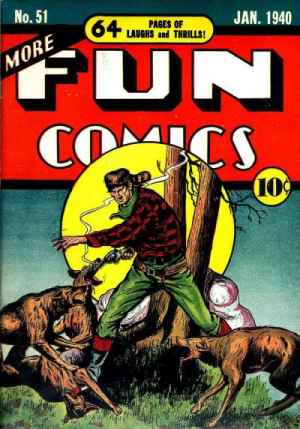 The Golden and Silver Age of comics were full of artists and writers that received no credit for their work until many years later. Sheldon (Shelly) Moldoff is one such artist having spent several years working in Bob Kane’s studio producing issues of the various Batman titles. This was not an uncommon practice in the industry as many big name artists like Kane and Will Eisner had studios and assistants to help keep the product flowing. In the case of Sheldon Moldoff, it is particularly unfortunate as we will never really know if he created completely or co-created some of comics most enduring characters. In later years even Mr. Moldoff was unclear on the issue of who created what characters. While we know the broad strokes, the details of the creation of characters like Bat-Girl, Mr. Freeze, Poison Ivy and Clayface (not to mention Ace the Bat-Hound and Bat-Mite!!!!!) are lost to us. In the late 40’s/early 50’s Moldoff did extensive work on EC’s horror titles such as This Magazine is Haunted and Tales of The Supernatural and included the creation of such characters as Doctor Death.
The Golden and Silver Age of comics were full of artists and writers that received no credit for their work until many years later. Sheldon (Shelly) Moldoff is one such artist having spent several years working in Bob Kane’s studio producing issues of the various Batman titles. This was not an uncommon practice in the industry as many big name artists like Kane and Will Eisner had studios and assistants to help keep the product flowing. In the case of Sheldon Moldoff, it is particularly unfortunate as we will never really know if he created completely or co-created some of comics most enduring characters. In later years even Mr. Moldoff was unclear on the issue of who created what characters. While we know the broad strokes, the details of the creation of characters like Bat-Girl, Mr. Freeze, Poison Ivy and Clayface (not to mention Ace the Bat-Hound and Bat-Mite!!!!!) are lost to us. In the late 40’s/early 50’s Moldoff did extensive work on EC’s horror titles such as This Magazine is Haunted and Tales of The Supernatural and included the creation of such characters as Doctor Death.
Like many artists with a long a career, Shelly was treated horribly by the publishers from time to time. In the late 1960s he and some of the other classic Silver Age artist were fired from DC Comics because of nothing more than editorial whim. He bounced back quickly though by going to work in animation doing storyboards for many cartoons such as Courageous cat and Minute Mouse and wrote a few promotional comic books. He famously said that “he never went a day without work”, a rare statement for a freelance artist, and he was rarely ever heard to be bitter about the treatment he got in the industry.
Tony DeZuniga
Tony DeZuniga died in May 2012 from complications following a stroke at the age of 79. He left behind an amazing career in comics and video games. He co-created Western anti-hero Jonah Hex and the character Black orchid for DC comics and had a long career with both DC and Marvel.
As one of the first Filipino artist to get work from an American comic book publisher, DeZuniga was a leader and role model for many other aspiring minority artists. The bulk of Tony’s work in comics was as an inker and cover artist with a large number of full pencil assignments.
Eventually Tony shifted from the comics to the video game industry working for Sega for many years. After retiring for regular illustration work, Tony continued accepting commissions and taught art right up until his death.
Ernie Chan
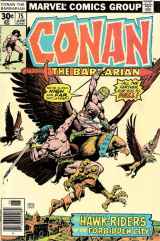 Ernie Chan’s death was one I missed when it happened last May. It was a surprise and rekindled in me a desire to reread the Conan books he did for Marvel in the 70’s which are now being printed in collections by Dark Horse Comics. If you read any Conan comics in the 80’s you were likely looking at Ernie’s art.
Ernie Chan’s death was one I missed when it happened last May. It was a surprise and rekindled in me a desire to reread the Conan books he did for Marvel in the 70’s which are now being printed in collections by Dark Horse Comics. If you read any Conan comics in the 80’s you were likely looking at Ernie’s art.
Ernie had a beautiful rendering style that filled every panel with power and energy. Like many artists in the 70’s and 80’s he did pencils and sometimes just inked over other artist’s pencils. The factory nature of comics in those days required speed and artists like Chan were in demand. He could fit perfectly into the flow and style of almost any book.
The concept that DC books in the 60’s sold due to the sensational and iconic covers came from the dazzling covers Ernie did as DC’s primary cover artist for a number of years.
Marc Swayze
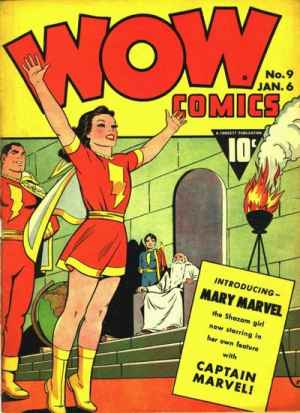 Marc Swayze’s career in comics was not as long as many of his contemporaries lasting only a dozen years or so. But in that short time, Swayze was a mainstay at Fawcett by writing and drawing many Captain Marvel stories as well as being the primary creator on The Phantom Eagle character in WOW Comics.
Marc Swayze’s career in comics was not as long as many of his contemporaries lasting only a dozen years or so. But in that short time, Swayze was a mainstay at Fawcett by writing and drawing many Captain Marvel stories as well as being the primary creator on The Phantom Eagle character in WOW Comics.
After Fawcett closed its doors, Swayze went to Charlton Comics and ending his comics career there working as an art director. To modern readers he is probably best known for an ongoing series of columns in Alter Ego magazine called We Didn’t Know It Was the Golden Age.
Joe Kubert
Joe Kubert was a giant in the industry and that is not exaggeration. His legacy is an amazing testament to his talent and his dedication to educating new artists.
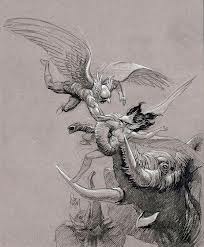 In a comics career that spanned from the 1940’s right up until his death, Kubert’s body of work is massive. He is credited as the co-creator of Sgt. Rock and is known for his work on Hawkman as well as other titles like Tarzan and G.I. Combat. Joe was Director of Publications at DC from 1967 to 1976 and oversaw much of the development of that company’s line. One of Kubert’s most celebrated works is Fax from Sarajevo, a non-fiction memoir of the personal correspondence from of a family trapped during Serbian siege of Bosnia. It is powerful and moving read and was honored by the industry’s top awards, the Harvey and Eisner awards.
In a comics career that spanned from the 1940’s right up until his death, Kubert’s body of work is massive. He is credited as the co-creator of Sgt. Rock and is known for his work on Hawkman as well as other titles like Tarzan and G.I. Combat. Joe was Director of Publications at DC from 1967 to 1976 and oversaw much of the development of that company’s line. One of Kubert’s most celebrated works is Fax from Sarajevo, a non-fiction memoir of the personal correspondence from of a family trapped during Serbian siege of Bosnia. It is powerful and moving read and was honored by the industry’s top awards, the Harvey and Eisner awards.
The longest lasting legacy Joe Kubert has left us is The Kubert School started in 1976 by Joe and his wife to educate future generations of comic and graphic artists. Among the alumni of this school are industry talents like Shane Davis, Amanda Conner, Stephen Bissette, Alex Maleev, Rags Morales, Rick Veitch and of course Kubert’s two sons Adam and Andy along with a host of others. Among his final published works is the Before Watchmen: Nite Owl where Joe inks his son Andy’s pencils.
There is always sadness and shocks when these lists come out. But while they are sad list to be sure, they are also great excuses to look up the work of these talented creators and enjoy the legacies of some of the best comics have to offer.
What do you think? Leave a comment.

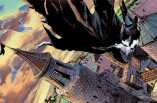
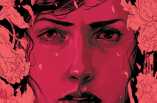
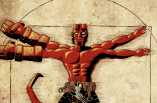
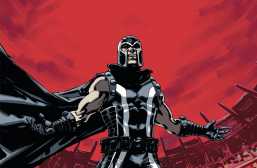
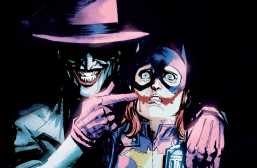
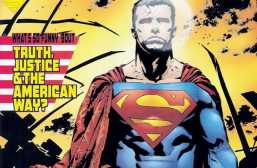
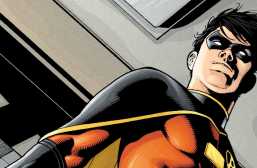
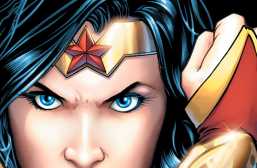
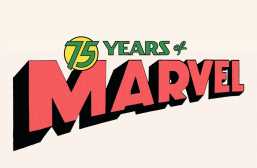
I was sad to hear about the passing of Al Rio. I like his work on DV8. RIP to all we lost in 2012.
It’s always sad when someone passes, especially when they were pioneers in their respective fields. The comic book world wouldn’t be the same without these people. Great article.
I used to read comics when my mind was in comic mode during the 90’s, I still have many deep feelings for many of the comicers of today and if I was to create a comic it would be so deep that ones eyeballs would fall onto the pages and never come out
Now that sounds like a comic that I want to read lol
Thanks for writing this, some of these artists aren’t receiving enough credit for their contribution to the arts.
Some of these are not known to me. I will take your advice and loop up their work to celebrate their legacy.
Then my work here is done!
I knew of Mr Kubert’s departure but I don’t know that very much about anyone else that left us. I will do as pete.
it has been a great year for comics and comics adaptations
Interesting that outside of America that comics are considered more haute couture. But then I don’t find this terribly surprising; it seems to me that Europe is more focused on forms in their high art.